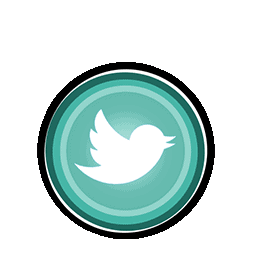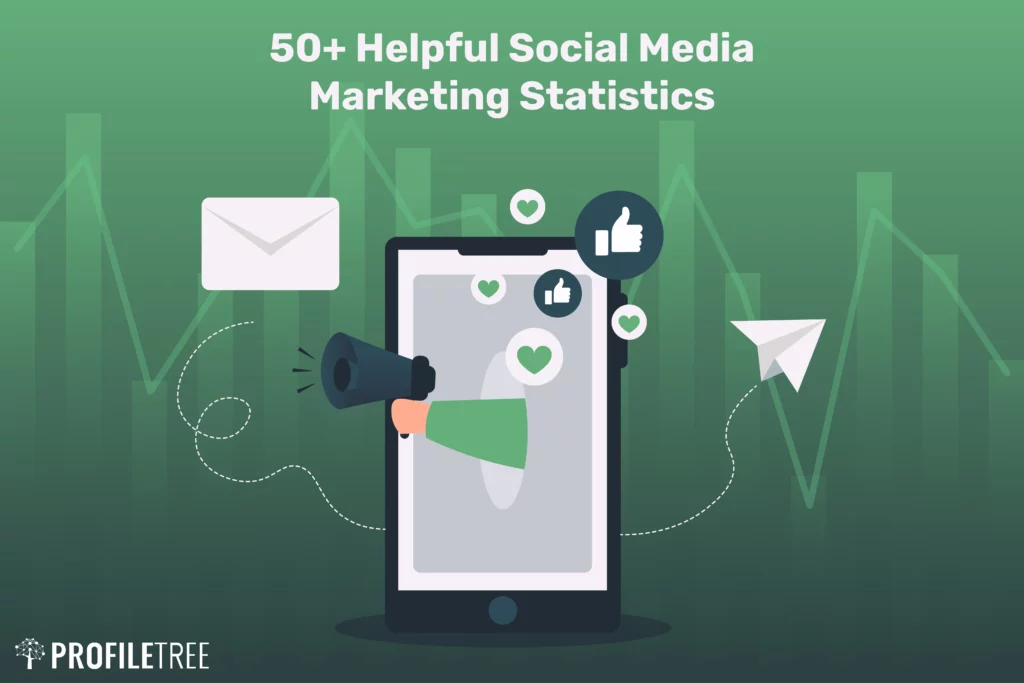In a world filled with smartphones and the buzz of notifications, ever wondered exactly how many people use social media?
It shouldn’t come as a surprise that social media has taken the whole world by storm this past decade. From Facebook to Instagram, to Snapchat, the number of social media platforms just keeps on growing. This new age of technology shows no signs of slowing down.
Keep reading to find out what you need to know before delving into the world of social media and digital marketing.
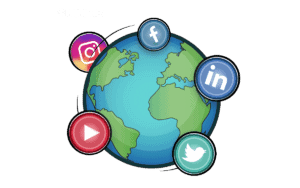
Table of Contents
What’s Up with Social Media?
At first, people thought that social media would be a temporary craze that would eventually be forgotten. Obviously, this is not just a trend. On the contrary, people now use social media as a way to connect with others and to keep up with the world around them. Moreover, it’s become an escapism, or a way to take a break.
As a business owner, what do you gain from this rapid change in platforms? And why should you know how many people use social media? Why would these numbers be important for your business?
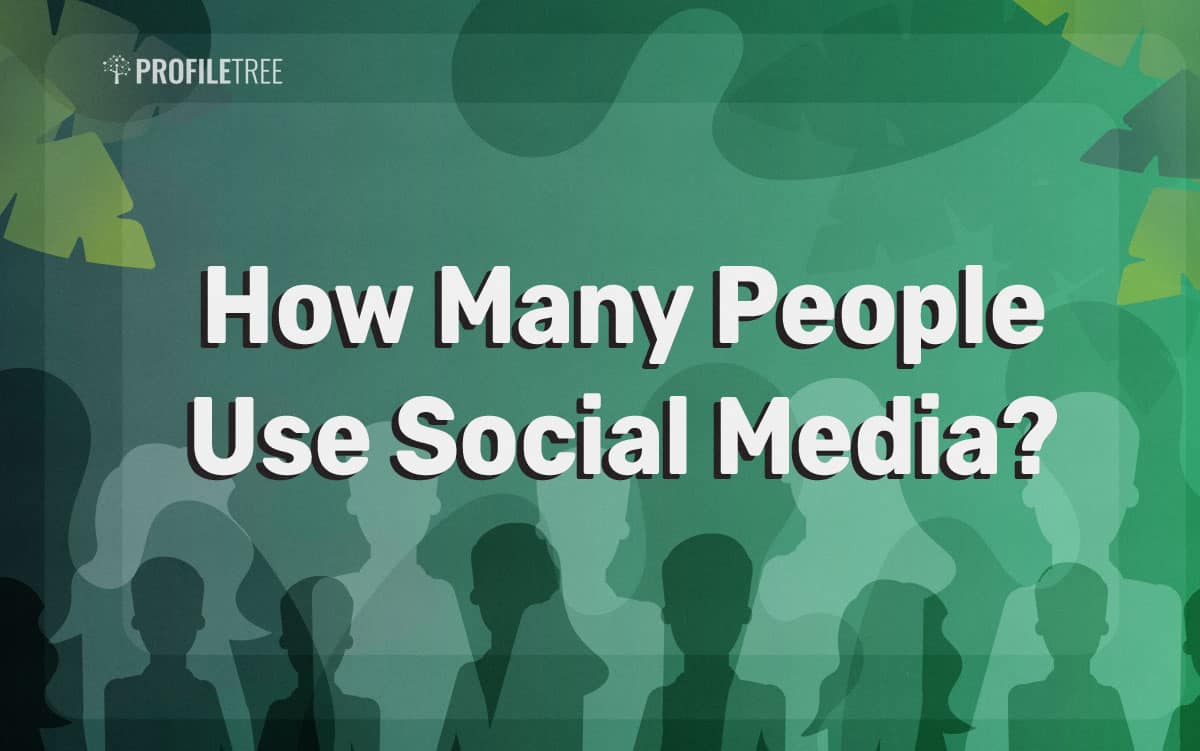
Why Is Social Media Marketing so Important Now?
The transition from old media (i.e. newspapers and television) to new media (i.e. the Internet) has majorly shifted the marketing field throughout these past two decades.
The TV set that your audience used to gather around is a thing of the past. Nowadays, the majority of people are only interested in checking their social media accounts. How about a little experiment? Just walk through any street of your choosing and count how many heads are bent down with their eyes not moving an inch from their mobile’s screen. You’ll eventually lose count. People traded the TV for the Internet and they aren’t looking back.
Social Media for Business
So, how can businesses follow suit? How can you communicate with your audience using social media as a mediator?
The truth is, if businesses fail to evolve their marketing techniques, they won’t be able to keep up with what their audience wants. It’d only be a matter of time before they lose their consumers. People want a brand that will connect with them, wherever they are.
Moreover, you want your audience to trust and like you, but for that to happen, they need to connect with you. They can’t connect with you if you’re not present where they spend most of their time.
The first thing you should do to start a connection is to figure out who your audience is. What do they like? What don’t they like? Who are their favorite celebrities? Why do they use social media? To answer these questions, however, you need to know exactly how many people use social media. You’ll also benefit from learning what people use different platforms for.
Regional Breakdown of Social Media Usage: A Global Perspective
Social media has become an undeniable force in the modern world, with billions of users across the globe connecting, sharing, and engaging online. However, the landscape of social media usage varies significantly across different regions and countries. Understanding these regional trends offers valuable insights into the evolving global digital landscape.
Penetration Rates:
- Eastern Asia: Leads the world with a social media penetration rate of 72%, boasting over 1.2 billion users. China accounts for over 800 million users, demonstrating the platform’s widespread adoption in the region.
- Southern Asia: Follows closely with a penetration rate of 71% and over 961 million users. India plays a significant role, with over 450 million users across various platforms.
- North America: Maintains a high penetration rate of 74%, with over 300 million users. Facebook, Instagram, and Twitter remain dominant platforms in the region.
- Europe: Registers a penetration rate of 68%, with over 540 million users. Facebook and WhatsApp are particularly popular, while younger demographics increasingly favor platforms like TikTok and Instagram.
- Latin America: Shows a growing penetration rate of 72%, exceeding 430 million users. Platforms like Facebook, WhatsApp, and Instagram are widely used, while regional platforms like Mercado Libre and Globo.com are also gaining traction.
- Middle East & North Africa: Experiences a steadily increasing penetration rate of 51%, reaching over 280 million users. Instagram, Facebook, and TikTok are popular choices in the region.
- Sub-Saharan Africa: Displays the lowest penetration rate globally at 23%, with over 270 million users. Facebook and WhatsApp are the most widely used platforms, with limited access and infrastructure posing challenges to broader adoption.
Trends and Observations:
- Emerging markets: Witness impressive growth in social media penetration, driven by increased internet access and smartphone adoption. Regions like Southeast Asia and Africa are expected to experience significant user growth in the coming years.
- Platform preferences: Vary depending on the region and cultural context. While Facebook and WhatsApp maintain global dominance, regional platforms like WeChat (China) and VK (Russia) hold strong shares in their respective markets.
- Mobile-first approach: Smartphone usage reigns supreme for social media access, influencing platform design and functionalities. Apps like TikTok and Instagram cater to mobile-driven consumption habits.
- Digital divide: Unequal access to internet infrastructure and digital literacy create disparities in social media usage, particularly in developing regions. Addressing these gaps is crucial for inclusive online participation.
Future Outlook:
- Social commerce: Integration of social media platforms with e-commerce functions is expected to continue, offering new opportunities for businesses and users.
- Social video platforms: Platforms like TikTok and YouTube are expected to see continued growth, driven by their engaging video formats and mobile-friendly interface.
- Privacy concerns: Growing awareness of data privacy and security issues will likely influence user behavior and platform policies.
- Regulation and governance: Governments are increasingly looking to regulate social media platforms, with potential implications for user freedom and platform operations.
How Many People Use Social Media in the World?
The Global Digital Report of 2018 estimated the number of social media users in the world to be 3.196 billion, 13% higher than the year before. With a total worldwide population of 7.6 billion people, that estimate is a penetration of more than 40% of the population.
Additionally, each social media user has an average of 7.6 social media accounts.
Previous reports had predicted that 3.02 billion social media users would only be reached by 2021. It was also estimated that 750 million of those users would be from China, while one third of a billion would be from India. Talk about a jump!
The country with the highest increase in year-to-year social media usage is Saudi Arabia. Gulf countries saw a 32% increase in the number of social media users as opposed to the global average of 13%. The U.A.E, South Korea and the UK all have an average of <5% increase, the lowest globally.
According to a study by IDC Research, 80% of people check their smartphones for notifications within 15 minutes of waking up. People now spend an average of 87 minutes of their day on their smartphones on weekdays. On weekends, they spend more than 160 minutes on social media.
The Philippines managed, for the third year in a row, to hold on to its title as champions of social media. Filipinos spend the longest time on social media with an average of 3 hours and 57 minutes a day. Meanwhile, Brazilians are catching up with an average of 3 hours and 39 minutes spent on social media per day.
Increasing Potential Reach
With social media quickly becoming a part of everyone’s daily routine, the above statistics are bound to double and triple within the next few years. When you think about how many people use social media, consider the many business opportunities that come with that change in behaviour. The more people use social media, the higher the number of potential reach will be. Knowing where to reach your target audience is key to your business’s survival.
If you’re thinking about expanding your business or branching out in different countries, you should start by finding out how many people use social media in the country you plan on expanding to.
How Many People Use Social Media in the UK?
In countries like the UK, finding out how many people use social media should not be taken lightly. Statistics have shown that over 83% of the UK population are now active on social media. As a business owner operating in the UK, ignoring that huge potential market could be catastrophic for your company.
In 2017, a BBC Newsbeat study about how many people use social media in the UK showed that the highest percentage of all social media users is among those aged between 23 and 34. On the other hand, the lowest percentage is among the age group of 50-65 years old. It’s best to approach your target audience using the social media platforms they’re most active on. If they’re among a young age bracket, then YouTube, Instagram, and Snapchat would be the right spots to start. However, if your target falls in the older segment, then using Facebook and Twitter would be a better approach.
How Many People Use Social Media: Statistics
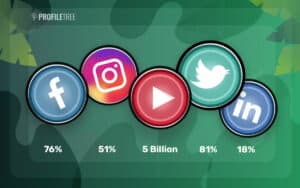
- 76% of Facebook users check it everyday.
- 60 billion messages are exchanged through Facebook Messenger and WhatsApp each day.
- 5 billion videos are watched on YouTube daily.
- 51% of Instagram users open the app daily, while 35% check it more than once throughout the day.
- Instagram Stories now have a soaring 300 million active users compared to Snapchat’s 150 million.
- 81% of millennials check Twitter at least once a day.
- 6,000 tweets are sent every second and 500 million tweets are sent every day.
- 18% of LinkedIn users login a maximum of once a day.
Most Popular Social Media Platforms
There’s an endless list of social media websites to reach your audience through. Once upon a time, MySpace was the place to be for most Internet savvy hipsters. Nowadays, however, only someone born in the early 90’s or before will even remember what MySpace was. The Internet has evolved since those days, but that doesn’t mean people got bored of user-created content. Care to guess which social media channel is a hotspot these days?

According to all statistics, Facebook seems to be the most popular social media platform among users. It’s also the leading mobile-accessible social application.
Facebook now boosts a whooping 2.23 billion active users. It’s also the first ever social media website to reach the milestone of one billion monthly active users. Not too bad for a website that started in 2004 to cater solely to Harvard students.
Facebook has helped many startups and small-to-medium businesses sell their products and services. For certain businesses, it’s the only source of communication between them and their consumers. In that case, a Facebook page acts as that business’s store.
It doesn’t cost as much as old media and it’s an effective and simple way to reach your target audience.
Youtube

As the second most popular social media channel, YouTube is now pulling in more than 1.8 billion monthly users. With little competition against this giant video sharing site, it’s not hard to see why it’s still a favorite after all these years. YouTube was launched in 2005 as a video version of an online dating service. In 2006, It was bought by Google and is now a Google subsidiary. Youtube is fairly easy to use and to upload videos on.
YouTube is a good way to reach your audience through informative and entertaining videos. There are different types of accounts that you can pick from, including accounts that are solely for business ventures. There are also many tips and tricks to get your content noticed and boost your YouTube SEO.
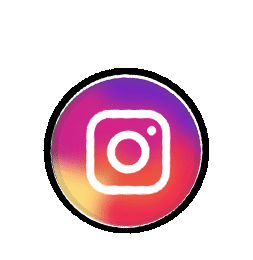
Instagram has quickly become the popular new kid on the block, reaching the one billion active users milestone last June. Since its launch in 2010, this, mainly visual, app has become a favorite for young people aged 18-34 years old. Upon seeing its long-term potential as a powerful social media force, Facebook bought Instagram in 2012.
One of Instagram’s most popular features is filters. Instagram gives users the opportunity to put filters on their pictures and edit them as they please. This adds to Instagram’s appeal to the younger demographic. It also joined the likes of Snapchat with its story feature, as well as competing with YouTube after launching IGTV.
Brands can connect with their audience on Instagram through aesthetically-pleasing photos and videos. Through the use of hashtags and tagging, brands are now receiving free publicity with their consumers as their own models. After all, a picture is worth a thousand words.
Twitter
While Twitter may not be the most popular social media platform, it still boosts a huge number of users. With 335 million active users, Twitter users continue to be loyal to the micro-blogging website. It is somehow inspirational: 12 years after its launch in 2006, many people still tweet to express their daily thoughts. Nowadays, many of the younger demographic are choosing to use Twitter instead of Facebook. With Facebook’s gradual shift towards being a more senior-based platform, Twitter has swooped in to become a refugee for millennials.
Businesses could, in fact, benefit from Twitter’s 280 characters per tweet limit. When you post a tweet and link it to a longer Facebook post, you can check the click-through rate of the link and find out exactly how engaged your audience is with you. Find out what works with your audience and what flops. Try out a Twitter Analytics tool to understand more about what you need to do to reach more people.
Content Creation on Social Media
With more and more people gravitating towards social media, using this shift to your advantage should be a priority. Find out how many people use social media in the country your business operates in. This will give you a lot of insight into how to reach your target audience there.
Something you should keep in mind is not to create countless accounts on various social media platforms just for the sake of having an online presence. You should always give a lot of thought to the actual content you’re posting. People connect with what you say. Plan a clear strategy and put it into action. Watch for feedback: evaluate and improve.
It’s also important to plan your content in a way that suits the platform you’re posting on. For example, post aesthetically-pleasing pictures with witty captions on Instagram. Try a catchy tweet with a quick link to your website on Twitter. Share content that not just informs your audience about your new products or services, but, additionally, engages them.
Content Planning
Articles, videos, and images are the top most engaging content on social media.
Launch a holistic social media campaign that connects everything together. Don’t confuse your audience by sending different messages through the different media. Like a puzzle; let all your social media activity form one big picture. Your messages should be consistent.
Of course, choosing which social media platform to use still depends on who you’re targeting. Put some clear thought into which social media platforms you should be using. If your target audience doesn’t use Instagram, why would you bother creating an account there? It would be a waste of time and resources. Know your audience: quality over quantity!
Impact of Social Media: A Double-Edged Sword
Social media has undoubtedly revolutionized communication and information sharing, but its impact on individuals and society is multifaceted, encompassing both positive and negative consequences.
Positive Impacts:
- Enhanced communication: Social media facilitates instant communication and connection across vast distances, fostering relationships and building communities.
- Global access to information: Individuals have unprecedented access to diverse news, educational content, and viewpoints, promoting global awareness and understanding.
- Empowerment and self-expression: Social media empowers individuals to express themselves creatively, share their experiences, and connect with like-minded individuals, boosting self-confidence and sense of belonging.
- Opportunities for collaboration and innovation: Platforms facilitate collaboration on projects, sharing ideas, and fostering innovation across various fields.
- Business growth and marketing: Businesses benefit from extensive reach and targeted marketing opportunities, connecting with customers and promoting their products and services effectively.
- Social movements and activism: Social media provides a powerful tool for mobilizing communities, raising awareness about social issues, and promoting positive change.
Negative Impacts:
- Misinformation and fake news: The rapid spread of unverified information and fake news can mislead users, fuel polarization, and negatively impact public opinion.
- Cyberbullying and online harassment: Social media can facilitate cyberbullying and online harassment, leading to emotional distress, low self-esteem, and even mental health issues.
- Privacy concerns and data breaches: The collection and sharing of personal data raises privacy concerns and exposes users to potential data breaches and misuse of information.
- Addiction and compulsive behavior: Excessive social media use can lead to addiction and compulsive behaviors, disrupting sleep patterns, decreasing productivity, and negatively impacting mental well-being.
- Social comparison and unrealistic expectations: The curated and often idealized portrayal of lives on social media can lead to social comparison, feelings of inadequacy, and unrealistic expectations, impacting self-esteem and body image.
- Echo chambers and polarization: Social media algorithms can create echo chambers, exposing users primarily to content that reinforces their existing beliefs and limiting their exposure to diverse viewpoints, potentially leading to increased polarization and social division.
Navigating the Impact:
Recognizing both the positive and negative impacts of social media is crucial for responsible and mindful use of these platforms. Individuals can:
- Critically evaluate information: Be mindful of bias, misinformation, and verify information before sharing it.
- Maintain healthy boundaries: Set limits on social media usage and prioritize real-world interactions.
- Curate a positive online environment: Choose to follow accounts that inspire and uplift, and unfollow those that induce negativity or anxiety.
- Practice responsible online behavior: Respect others, avoid cyberbullying, and promote a positive online environment.
- Seek support if needed: Don’t hesitate to seek help from friends, family, or professionals if experiencing negative impacts from social media.
Social media platforms and policymakers also play a crucial role in:
- Improving content moderation and fact-checking: Implementing effective measures to combat misinformation and fake news.
- Protecting user privacy and data: Ensuring data security and transparency in personal information collection and usage.
- Promoting responsible marketing practices: Discouraging deceptive marketing tactics and promoting ethical advertising practices.
- Combatting online harassment and bullying: Implementing robust reporting systems and taking proactive measures to address cyberbullying.
- Encouraging responsible use and digital literacy: Empowering users with the skills and knowledge to navigate social media responsibly.
Future Trends in Social Media: Shaping the Landscape of Tomorrow
The social media landscape is constantly evolving, with new technologies and trends emerging at an ever-increasing pace. While predicting the future is inherently uncertain, exploring potential developments can help us prepare for and navigate the next chapter of this digital revolution.
Here are some key trends shaping the future of social media:
1. The rise of immersive experiences:
- Virtual reality (VR) and augmented reality (AR): Platforms will integrate VR and AR technologies to create more immersive social experiences, blurring the lines between the physical and digital worlds.
- 3D avatars and digital spaces: Users will have personalized 3D avatars and interact within virtual environments, furthering self-expression and virtual social interaction.
2. Decentralization and blockchain technology:
- Web3 and the metaverse: Social media platforms built on decentralized networks like Web3 will offer greater user control over data and create new virtual spaces for social interaction.
- Tokenized economies and digital assets: Social media could become intertwined with cryptocurrencies and non-fungible tokens (NFTs), enabling users to own and trade digital assets within these platforms.
3. Artificial intelligence and personalization:
- AI-powered content curation and recommendations: AI will personalize user experiences by suggesting relevant content, tailoring experiences to individual preferences and interests.
- AI-driven social assistants and chatbots: AI assistants and chatbots will handle customer service, provide personalized recommendations, and even manage social media presences, blurring the line between human and machine interaction.
4. Focus on privacy and data security:
- Increased user control over data: Users will demand greater control over their personal data, prompting platforms to implement more transparent and user-centric data policies.
- Emerging privacy technologies: New technologies like differential privacy and homomorphic encryption will allow for social media usage without compromising user anonymity and data security.
5. The rise of niche communities and micro-influencers:
- Hyper-personalized social experiences: Users will gravitate towards niche communities and platforms that cater to specific interests and values, fostering deeper connections and shared experiences.
- Micro-influencers with engaged audiences: Influencers with smaller but highly engaged audiences will hold more sway and influence, driving trends and shaping brand loyalty within specific niches.
Implications of these trends:
- Shift in power dynamics: Users may gain greater control over their data and online experiences, potentially challenging the dominance of major platforms.
- New monetization opportunities: Creators and businesses will need to adapt to new monetization models within emerging platforms and virtual economies.
- Ethical considerations: Concerns regarding data privacy, AI bias, and the potential for manipulation will require careful consideration and ethical frameworks.
- Digital divide: Ensuring equitable access to technology and digital literacy will be crucial for inclusive participation in the evolving online landscape.
Navigating the future of social media:
While these trends offer exciting opportunities, they also present challenges and potential risks. Individuals and organizations should continuously adapt, prioritize responsible use, and advocate for ethical practices in the ever-evolving digital world. By embracing continuous learning and navigating these trends with awareness and responsibility, we can ensure that the future of social media fosters connection, innovation, and positive change for all.
Word to the Wise
Finally, social media is always changing. What’s trendy today may not be so tomorrow. You should keep yourself and your business up-to-date with the latest trends and features across all social media platforms. Keep yourself informed on the latest hashtags and trending topics and use them to connect with your audience.
People use social media FAQ
Q: How many people use social media worldwide?
A: As of October 2023, there are approximately 5.22 billion social media users worldwide, representing over 67% of the global population.
Q: Which social media platforms are the most popular?
A: The most popular social media platforms currently are:
- Facebook: 2.9 billion monthly active users
- YouTube: 2.6 billion monthly active users
- WhatsApp: 2 billion monthly active users
- Instagram: 2 billion monthly active users
- WeChat: 1.2 billion monthly active users
Q: How much time do people spend on social media each day?
A: The average person spends approximately 2 hours and 27 minutes on social media each day. However, this varies significantly across different age groups, regions, and demographics.
Q: What are the benefits of using social media?
A: Social media offers a variety of benefits, including:
- Connecting with friends and family
- Staying informed about news and current events
- Discovering new interests and hobbies
- Building professional networks
- Sharing creative content and expressing oneself
- Engaging in social movements and activism
Q: What are the risks associated with using social media?
A: Social media also carries some potential risks, such as:
- Cyberbullying and online harassment
- Addiction and compulsive behavior
- Social comparison and unrealistic expectations
- Misinformation and fake news
- Privacy concerns and data breaches
Q: How can I use social media responsibly?
A: To use social media responsibly, you can:
- Set limits on your social media usage
- Be mindful of the information you share online
- Critically evaluate the information you consume
- Follow accounts that inspire and uplift you
- Unfollow accounts that cause negativity or anxiety
- Prioritize real-world interactions
- Seek support if you experience negative impacts from social media
People use social media Conclusion
Social media has become an undeniable force shaping our lives, offering both tremendous opportunities and potential risks. By understanding the diverse usage patterns, motivations, and impacts of this technology, we can navigate the evolving digital landscape with greater awareness and responsibility. As we embrace the exciting possibilities of the future, let us ensure that social media serves as a tool for connection, positive change, and empowerment for all.
